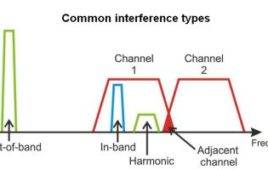Spectrum is a precious and finite resource that is critical for both current and future wireless communications. As Chairman Wheeler recently stated at the FCC’s Millimeter Wave Workshop, “Spectrum is the mother’s milk of modern day communications.”
As a resource that cannot be seen or touched, the importance of efficient spectrum management is easily underestimated. Considering the exponential rate that wireless capabilities continue to be adopted into everyday life and the pending influx of billions of devices introduced as part of the Internet of Things (IoT), the critical importance of efficiently managing the spectrum that facilitates these communications is paramount.
The insatiable appetite of the current day wireless user has led to the exponential growth in 4G LTE networks and is driving the industry to 5G at an unprecedented pace. Low megabit throughput that just a few years ago seemed like an endless supply is now comparable to the days of dial up modem access. While the boom of bandwidth and devices has fueled the growth of the industry, the amount of available spectrum has not kept pace.
Although the introduction of 5G promises to add gigabit speeds at millimeter wave frequencies, this technology is years away from commercial viability and the demand curve of the network will not wait. The reality is today’s consumer electronics rely almost exclusively on spectrum operating at 6 GHz and below for communications, and since the scientific community has yet to create additional GHz of spectrum, the focus of the industry must turn to the efficient management of the spectrum in use.
The challenges in providing efficient spectrum management are numerous. When we typically think of wireless in today’s world thoughts immediately go to our cellphone operator or the local Wi-Fi access point. The reality is there are many more users that also need to be considered that either license spectrum, lease or coordinate spectrum use or leverage unlicensed spectrum to support their communications. The government, Department of Defense, public safety and private networks, along with traditional Over-the-Air (OTA) broadcasters for television and radio, all have stakes in the game. Their spectrum use along with the licensed and unlicensed wireless access for consumer devices must be efficiently managed to support the full range of requirements.
Spectrum Management Adaptations to Increase Efficiency
While the challenges are many, there are solutions that help deliver the most efficient use of spectrum resources. There are several initiatives underway that are paving the way for the next generation.
- Optimized Spectrum Planning and Management – Next generation spectrum management systems are integrating baseline capability to automate the spectrum planning, coordination (including cross-border), and licensing processes to increase the efficiency of the system. What once involved cumbersome multi-step processes across multiple disparate systems is now being delivered through a comprehensive systems approach. These systems now provide spectrum planning and engineering, spectrum administrative and spectrum monitoring functions from a common platform. This step forward in optimization sets the foundation for further efficiencies as the industry moves to 5G.
- Dynamic Spectrum Access – Traditional spectrum licensing prescribed exclusive access for users in their licensed spectrum. This worked as long as unoccupied beachfront spectrum existed for the next technology generation to use. However, faced with the reality that spectrum at 6 GHz and below has now nearly all been allocated, the next step in increasing usage is to define scenarios for sharing. The FCC has backed a number of initiatives moving in this direction. Starting with TV Whitespace in 2013 that established a dynamic on line frequency licensing mechanism based on position and surrounding interference contours to the most recent rulings (still pending) for 3.5 GHz that delivers a tiered model of access, the FCC has taken steps to provide guidelines for dynamic access. In concert with these measures, spectrum management solutions are evolving to support these capabilities.
- Spectrum Monitoring – As the use of spectrum becomes saturated with numerous user types and access mechanisms, understanding the actual usage of the spectrum and identifying the proper use from the bad actors is a key element to the most efficient use of the resource. Today’s spectrum monitoring provides a feedback loop through the Spectrum Management system that is cross referenced with the licensing database and predictive modeling to assist in identifying and calculating the spectrum efficiency. Spectrum monitoring should include a comprehensive suite of monitoring devices ranging from fixed site to mobile to portable to accommodate the different scenarios that occur.
- Frequency Clearing and Interference Hunting – As the bandwidth and signals of today’s communications technologies grow in width (MHz), interference can no longer be planned around. Traditional frequency planning of narrowband technologies allowed for the definition of a plan that avoided problem areas (interfering signals) in licensed spectrum. Today when LTE consumes the entire licensed band, interference has nowhere to hide. Interference in a broadband channel degrades throughput and network performance. The expedient removal of these interfering signals maximizes the throughput of the network.
What else can be done?
As the use of the spectrum becomes more condensed, existing incumbents must look for efficient ways to modify their systems to do more with less. While a number of advancements in spectrum management has moved the capability to a more holistic solution, there is still much to be done.
- Current spectrum management systems in use must be automated for optimization and efficiency.
- The sharing mechanisms proposed at the FCC have not addressed the larger question of spectrum sharing among users of equal priority and capability in the same channel.
- While the 3.5 GHz band may define the path for tiered use, the impacts on the carrier business model that must share and periodically relicense spectrum has yet to be seen in the market.
- Additionally, what has been largely overlooked is the role of the traffic cop in a dynamically shared situation. Solutions are required to objectively guarantee the subordinate user access at the appropriate time, the priority user access when they invoke their priority rights, and equitable access to the general user when they are on an equal playing field with others.
There is no end in sight for the demand curve of wireless bandwidth. Spectrum is the “rare earth metal” of the equation, delivering the critical component for current and next generation communications systems as we move from today to the future in 5G. The efficient use of the spectrum resource has never been more critical, further driving the requirement for spectrum management systems to deliver the most efficient use of the resource possible.
Casey Joseph is Vice President of Sales and Business Development at LS telcom, a provider of automated spectrum management systems.
Filed Under: Wireless • 5G and more, Telecommunications (spectrums)




